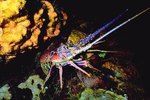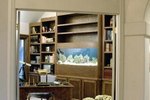Things You'll Need
Aquarium 1 gallon or larger
Water testing kit
Fine gravel or sand substrate
Triops are small crustaceans. They are often known as dinosaur or tadpole shrimp. These little critters are easy to take care of, and can be entertaining to watch. Triops are often sold in kits, and are sometimes used for educational purposes, allowing students to study them through their different life stages. Unlike many beginner aquatic pets, such as brine shrimp, which stay very small, triops grow to between 2 ½ and 3 inches long. Triops only live for about two months, but breeding them is easy, and will allow you to grow a new batch of triops whenever you want.
Place a group of triops in an aquarium or fish bowl of at least one gallon in size. Each adult triop needs about ½ gallon of water to swim in. Triops can be male or female, or may be hermaphroditic with female tendencies. This means some triops can occasionally reproduce by themselves, although having more than one triop can increase the chances of breeding. Placing a group of five, six or more triops in a slightly larger aquarium will increase the chances of having both male and female, or some hermaphroditic triops together in the aquarium.
Monitor the pH level in the aquarium or bowl by using a water testing kit. Triops tend to be hardy, and usually don’t mind pH fluctuations. However, when trying to breed the triops, it never hurts to be careful. Try to maintain a pH level between 7.0 and 9.0. Water additives can be used to raise or lower this level if necessary.
Maintain a water temperature between 72 and 86 degrees Fahrenheit. Because the temperature range is so wide, there’s usually no need for a heating or cooling system when raising triops. However, an aquarium heater can be added if necessary.
Place a layer of sand or fine gravel at the bottom of the aquarium. Triops don’t require any kind of substrate in order to remain healthy. However, triop eggs are usually laid in sand or gravel, and this substrate will make it easier to dry and scoop up the triop eggs later.
Place the triops in a room lit by natural or artificial light. Triops require at least two or three hours of light each day, and do even better when provided with 12 hours of light. This mimics the natural habitat of the creatures, and should encourage breeding.
Wait for the triops to breed. This should happen when the triops reach maturity, which is about two weeks after they hatch. In order for the new triop eggs to hatch, they must be removed from the aquarium and dried out. The eggs can then be rehydrated and hatched at any time. Years can pass, and the eggs should still be viable.
References
Writer Bio
Ann LaPan travels exuberantly in body and mind via planes, trains, automobiles and superb literature. A webmaster, website designer, graphic artist, accountant and musician (Jill of all trades, master of a few), she writes Today’s Horoscope for Shooting Star Astrology.com.





